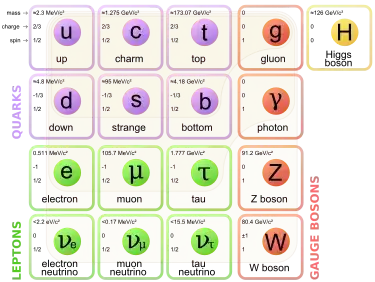At the moment the grand majority of data in particle physics is modeled extremely well by the standard model which also has been able to predict new phenomena. The most recent success is the discovery of the Higgs meson at the LHC at CERN. The particles in the table are called elementary, because they are enough to explain the complexity we observe in matter and its behavior.

The Standard Model of elementary particles, with the three generations of matter, gauge bosons in the fourth column, and the Higgs boson in the fifth.
Any new theory of particle physics will have to show that it can embed the standard model in its structure. From the current theories, whose direction goes towards a unifying model of all four forces, i.e. including quantization of gravity, the dominant proposal is a string theory based model. In string theory, all the particles in the table above are no longer fundamental to the theory, but are excitations of a string. What becomes elementary is a string, and interactions happen between strings etc. etc.
It is a different way of formulating what "elementary" means, and what a level of "elementariness" ( not really levels of an onion or a matriuska doll series) means, but it stops the particles in the table above of being fundamental.
At the moment there is no experimental proof that string theory is the correct theory to use in modelling a theory of everything, other than that it can accomodate the standard model.
There exist at times proposals for theories in the series of levels you are envisaging, for example the preon theory, but no experimental evidence has been found to confirm it. There exist experiments looking for compositeness of quarks and leptons and giving limits, for example this one for the top quark compositeness and this one from the CMS experiment at LHC :
Within the context of a quark and lepton compositeness model with a left-left isoscalar contact interaction, 95\% CL lower limits are set on Λ, the energy scale parameter for the contact interaction. .
In conclusion, physics is not about beliefs, but about observations and mathematical models that fit these observations and predict new ones to test the model. At the moment there is no reason to change the level of "elementariness" as far as the data is concerned and experimentalists are open to the possibility .
